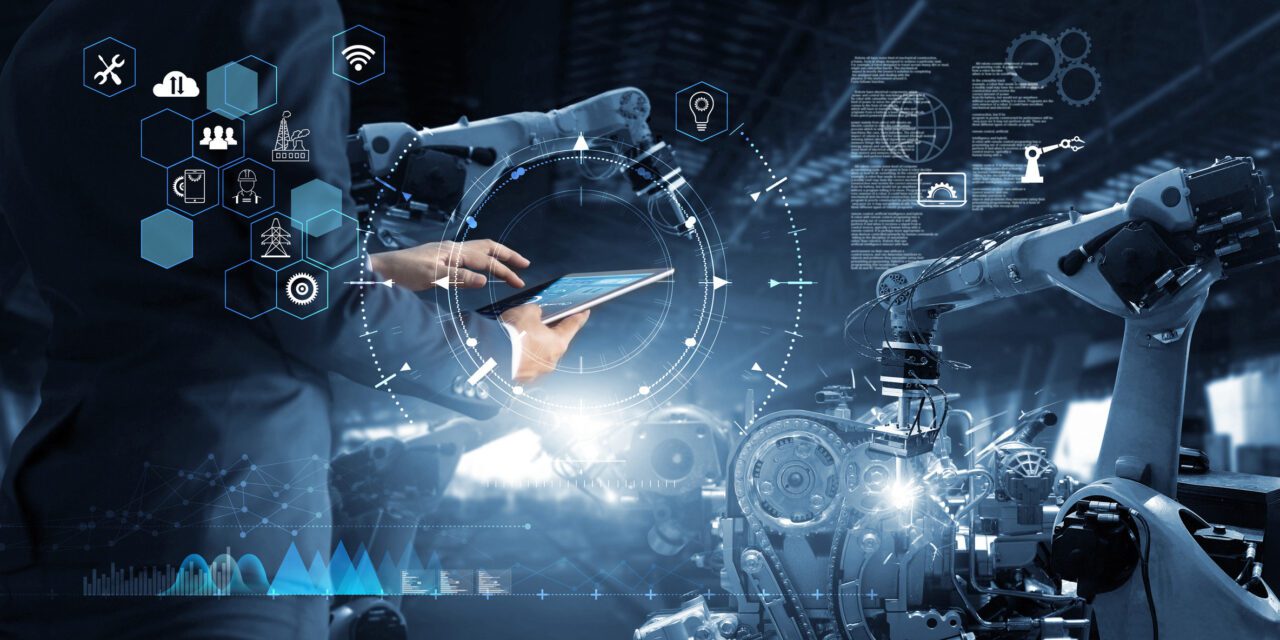Introduction to AI-Optimized Manufacturing
AI-Optimized Manufacturing In the ever-evolving landscape of technology, Artificial Intelligence (AI) has emerged as a transformative force across various industries. One sector where AI is making significant strides is manufacturing. AI-optimized manufacturing is reshaping traditional production methods, enhancing efficiency, and revolutionizing the way we build and produce goods. In this blog, we’ll explore the key aspects of AI in manufacturing and how it is driving a paradigm shift in the industry.
- Smart Factories: The Rise of AI-powered Automation
AI is ushering in the era of smart factories, where machines communicate with each other in real-time, optimizing the entire manufacturing process. Automation powered by AI enables tasks such as quality control, predictive maintenance, and supply chain management to be executed with unprecedented precision and speed. This not only reduces operational costs but also minimizes errors and ensures consistent high-quality output.
- Predictive Maintenance: Minimizing Downtime and Maximizing Efficiency
AI’s ability to analyze vast amounts of data in real-time is a game-changer for predictive maintenance. By monitoring equipment performance and identifying potential issues before they lead to breakdowns, manufacturers can schedule maintenance proactively, minimizing downtime and maximizing overall efficiency. This predictive approach not only saves costs but also extends the lifespan of machinery and equipment.
- Optimizing Supply Chain Management: From Just-in-Time to Just-in-Advance
AI algorithms analyze historical and real-time data to optimize supply chain management. This enables manufacturers to transition from the traditional just-in-time approach to a more proactive just-in-advance strategy. AI helps in demand forecasting, inventory management, and logistics optimization, ensuring that the right materials are available at the right time and minimizing excess inventory costs.
- Quality Control: Ensuring Consistency and Precision
AI-powered computer vision systems are revolutionizing quality control processes. These systems can inspect products with incredible precision, identifying defects or deviations from quality standards that might be imperceptible to the human eye. This not only ensures a consistent level of quality but also reduces the likelihood of defective products reaching the market.
- Human-Machine Collaboration: Augmenting the Workforce
Contrary to the fear of job displacement, AI in manufacturing is often about collaboration rather than replacement. AI-enabled machines can take over repetitive, dangerous, or monotonous tasks, allowing human workers to focus on more complex and creative aspects of production. This synergy between humans and machines enhances overall productivity and drives innovation in the manufacturing process.
Conclusion
AI-optimized manufacturing is transforming the industrial landscape, ushering in an era of unparalleled efficiency, precision, and innovation. As businesses embrace these technological advancements, the potential for increased productivity and reduced costs becomes evident. The future of manufacturing lies in the seamless integration of AI technologies, creating a symbiotic relationship between humans and machines that propels the industry into new frontiers of possibility. With AI at the helm, the manufacturing sector is not just building products; it’s building the future.





